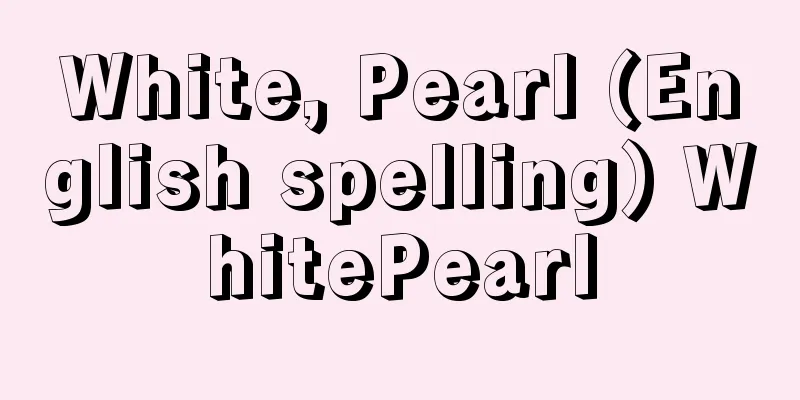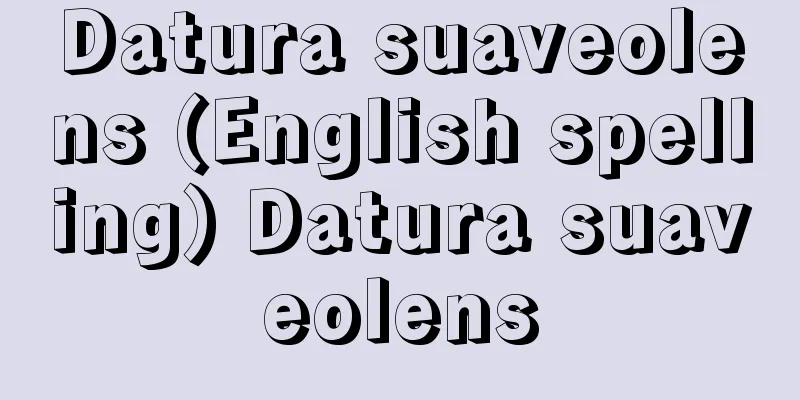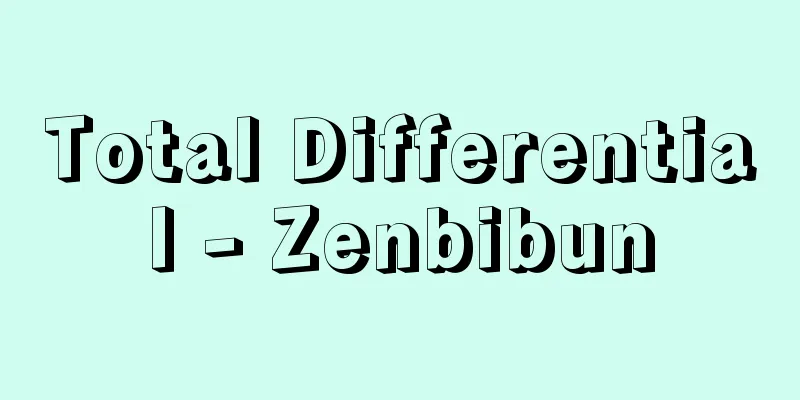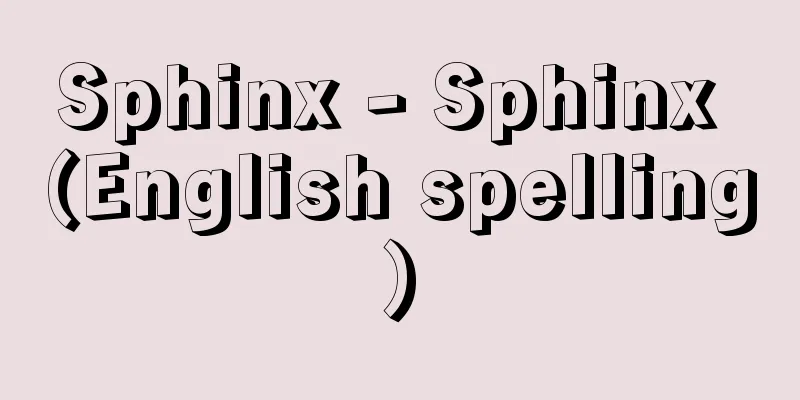境 - iki (English spelling) threshold, limen (English), seuil (French), Schwelle (German)
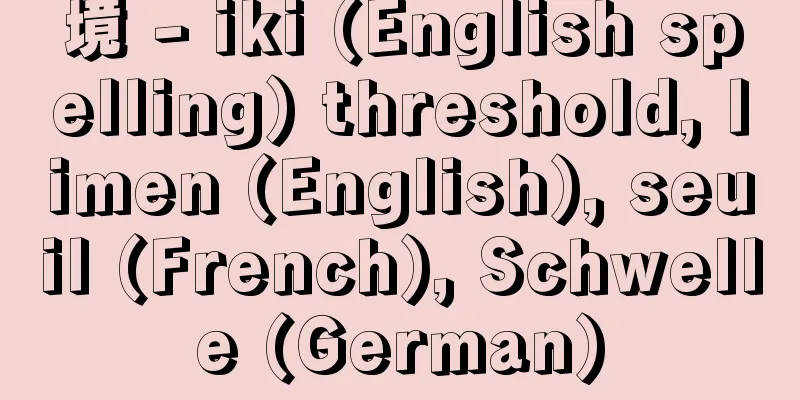
|
A threshold or threshold value refers to the minimum amount of stimulation required to produce a certain sensory or perceptual change, or the stimulation value that is the boundary between whether or not a certain sensory or perceptual change occurs. The word threshold means the boundary between the inside and outside of a house, and even today in the fields of engineering and physics, the term "threshold value" is more commonly used. Sometimes the terms threshold and threshold value are used interchangeably, with the boundary on the sensory dimension where a certain sensory change occurs being called the threshold, and the stimulation value that corresponds to the threshold being called the threshold value. [Stimulus threshold and difference threshold] Typical examples of thresholds are the stimulus threshold and the difference threshold. Even if a stimulus is physically present, if its intensity is weak, its presence may not be detected. As the stimulus intensity increases, it becomes detectable, and the minimum stimulus intensity that causes a sensation at that time is called the stimulus threshold or absolute threshold. In this way, the stimulus threshold is the stimulus value that corresponds to the lower limit of sensation. On the other hand, the upper limit of the stimulus value is called the terminal threshold or terminal stimulus. As the stimulus intensity is increased, at a certain point, the increase in intensity is no longer accompanied by an increase in sensation or causes a pain sensation, but the maximum stimulus value at which a change in sensory intensity corresponding to the stimulus intensity occurs is called the stimulus peak. The discrimination threshold refers to the minimum stimulus difference required to be able to just distinguish two stimuli with respect to a certain attribute. The difference in the sensory quantity corresponding to the discrimination threshold is called the just noticeable difference (also abbreviated as jnd), but nowadays just noticeable difference is generally used synonymously with discrimination threshold. The discrimination threshold when the value of the other stimulus is increased relative to the standard stimulus is called the upper threshold, and the discrimination threshold when the value is decreased is called the lower threshold, and the discrimination threshold is usually taken as the average of the two. In addition, different thresholds are defined depending on what is being treated as a sensory or perceptual experience. For example, various thresholds have been measured, such as the detection threshold when dealing with whether or not a stimulus can be detected, the color threshold when measuring whether or not a color can be sensed for a stimulus light, and the recognition threshold when measuring whether or not a presented stimulus can be identified as a letter or word. In any case, the lower the threshold, the higher the sensitivity is considered to be, so the reciprocal of the threshold is often used as an index of sensitivity. When the amount of stimulus does not exceed the threshold, it is called subthreshold or subliminal, and when it exceeds the threshold, it is called suprathreshold. The concept of threshold is extremely important in psychophysics, which quantitatively measures sensation and perception and examines the quantitative relationship between stimuli and sensation and perception. This is because, when considering the quantification of sensation, the stimulus threshold is the lower limit of sensation, and the discrimination threshold is thought to be a unit for expressing changes in the amount of sensation. For this reason, the founder of psychophysics, Fechner, GT, established psychophysical methods for measuring thresholds, including the adjustment method, the limit method, and the constancy method. Psychophysical methods are still important methods used not only in sensation and perception research, but also in experimental psychology in general. In addition, thresholds have the important characteristic of being easily identified in the sensory dimension, and have become an important index when trying to examine sensory mechanisms from the relationship between stimuli and sensations. From this perspective, thresholds have played an important role in sensation and perception research. [Psychometric Functions and Classical Threshold Theory] The definition of threshold as the minimum amount of stimulation that causes a change in sensation is easy to understand, but this definition implicitly assumes that there is a change point below which stimuli of lower intensity are never detected, and stimuli above that level always cause a sensation and are detected (Figure 1). However, when actually measuring the stimulus threshold, the observer's response to stimuli of intensity near the threshold is not constant, and even when a stimulus of the same intensity is presented, it may or may not be detected. For this reason, when the detection rate of a stimulus is plotted as a function of the stimulus intensity, a smoothly changing S-shaped curve is obtained (Figure 2). In general, a curve that plots the occurrence rate of a response as a function of the stimulus intensity is called a psychometric function (usually, positive responses such as "the stimulus was detected" or "the difference between stimuli was discriminated" are plotted). As such, the response near the threshold fluctuates probabilistically, so the threshold cannot be determined as a clear lower limit as mentioned above, and the threshold is generally defined as the stimulus value at which the occurrence rate of a response is 50%. From the above, it is more natural to define a threshold as the stimulus value at which a certain sensory change occurs. For example, the stimulus threshold is the stimulus value at which a reaction that can be detected and a reaction that cannot be detected (each reaction occurs half and half). Classical threshold theory explains why the psychometric function shows an S-shape by the temporal fluctuation of the threshold. In other words, the threshold itself is the lower limit of sensation, and whether or not the sensation occurs changes depending on whether or not it is exceeded (the point at which the perception probability changes suddenly from 0% to 100%). However, this value goes up and down over time (the threshold at a certain point is called the instantaneous threshold). For this reason, even if the stimulus intensity is constant, at one time the intensity exceeds the threshold and is detected, but at another time it is not detected due to an increase in the instantaneous threshold. If the distribution of instantaneous thresholds shows a normal distribution centered on a certain intensity, the perception probability (detection probability) of a stimulus plotted as a function of stimulus intensity is represented by a cumulative normal distribution function and shows an S-shape. If this explanation based on classical threshold theory is correct, the stimulus value at which the perception probability is 50% corresponds to the average value of the distribution of instantaneous thresholds. [High threshold theory and signal detection theory] In early psychophysics, it was believed that there exists a threshold such as an instantaneous threshold, and that a stimulus can only be detected if it is presented with a sufficient intensity. The theory that assumes such a high threshold and that noise cannot be strong enough to exceed the threshold is called the high threshold theory. However, research on signal detection theory, which theorizes the process of detecting a signal from randomly fluctuating noise, has denied the existence of a threshold itself. The basis for this assertion is that even if a subject is sufficiently trained, the subject's response is greatly influenced by factors unrelated to the sensory process, such as the frequency of stimulus appearance and the payoff for the response (how much benefit is gained when the stimulus is detected, and how much loss is incurred when it is not detected), and the measurement results change. For example, in an experiment requiring the detection of a stimulus, if it is known that the stimulus will be presented every time, even if it is weak, the former is more likely to produce a positive response of "I was able to detect it" than the latter. This tendency to respond biasedly due to non-sensory factors is called response bias. According to signal detection theory, the results of threshold measurements are explained by the ease of detecting signals and the judgment criteria set by the subject, and the concept of a threshold is not used. However, subsequent research on sensory neural processes has provided evidence supporting the existence of a threshold, and no clear conclusion has been reached as to whether a threshold exists universally in sensory neural processes. Regardless of the debate over the existence of such thresholds, there is no doubt about the validity of empirically defining thresholds as the amount of stimulation required to achieve a certain standard of performance and using them as an index of sensitivity. However, to avoid the problem of response bias, forced-choice procedures are now often used in sensory and perceptual measurements, including threshold measurements. For example, in the case of discrimination threshold measurements, two types of stimuli are presented in different spatial positions or at different times, and subjects are forced to decide which stimulus is larger. This procedure makes it possible to measure thresholds without being influenced by subjects' response biases, such as the tendency to respond more easily or less easily when there is a difference between the stimuli. Even today, sensitivity is estimated through such threshold measurement experiments, and various characteristics of the sensory and perceptual systems are being investigated. →Stimulus →Signal detection theory →Psychophysical measurement method [Kimura Eiji] "> Fig. 2. Identification of psychometric functions and thresholds "> Figure 1. Relationship between stimulus intensity and detection response occurrence rate. Latest Sources Psychology Encyclopedia Latest Psychology Encyclopedia About Information |
|
閾あるいは閾値とは,ある感覚・知覚の変化を生じさせるのに必要な最小の刺激量,あるいはある感覚・知覚の変化が生じるか生じないかの境目に当たる刺激値を指す。閾ということばは,家の内側と外側を仕切る境界である「しきい」の意味をもっており,現在でも工学や物理学の分野では「しきい値」というよび名の方が一般的である。閾と閾値を使い分ける場合もあり,ある感覚的変化が生じるかどうかの感覚次元上での境界を閾thresholdといい,閾に対応する刺激値を閾値threshold valueという。 【刺激閾と弁別閾】 閾の代表例は,刺激閾stimulus thresholdと弁別閾difference thresholdである。たとえ刺激が物理的に存在していたとしても,刺激強度が弱い場合には,その存在が検知されるとは限らない。刺激強度が増すと検知されるようになるが,その際に感覚を引き起こす最小の刺激強度を,刺激閾もしくは絶対閾absolute thresholdという。このように,刺激閾は感覚の下限に対応する刺激値である。一方,上限にあたる刺激値を刺激頂terminal threshold,terminal stimulusとよぶ。刺激強度を増していくと,ある所で強度の増加が感覚の増加を伴わなくなったり,痛覚を引き起こしたりするようになるが,刺激強度に対応する感覚強度の変化が生じる最大の刺激値を刺激頂とする。 弁別閾は,二つの刺激をある属性に関してちょうど区別できるようになるのに必要な最小の刺激差を指す。弁別閾に対応する感覚量の違いを丁度可知差異just noticeable difference(jndとも略記)というが,現在では丁度可知差異は弁別閾と同義として用いるのが一般的となっている。二つの刺激のうち標準となる刺激に対して,他方の刺激値を増やしていったときの弁別閾を上弁別閾upper threshold,逆に減らしていったときの弁別閾を下弁別閾lower thresholdといい,通常は両者の平均をとって弁別閾とする。 このほかにも,感覚・知覚経験として何を扱うかによって異なる閾値が定義される。たとえば,刺激の検出ができるか否かを扱う際の検出閾detection threshold,刺激光に対して色が感じられるか否かを測定する際の色覚閾color threshold,呈示された刺激がどの文字・単語などであるかを特定できるか否かを測定する認知閾recognition thresholdなど,さまざまな閾値が測定されている。いずれの場合においても,閾値が低ければ感度が高いと考えられているので,感度の指標として閾値の逆数を用いることが多い。刺激量が閾値を超えていない場合を閾下subthreshold,subliminal,閾値を超えている場合を閾上suprathresholdという。 閾という概念は,感覚・知覚を定量的に測定し,刺激と感覚・知覚との間の数量的関係を検討する精神物理学(心理物理学)において,きわめて重要なものであった。なぜなら感覚の定量化を考えた場合に,刺激閾は感覚の下限を示し,弁別閾は感覚量の変化を表わす際の単位となると考えられたためである。このため,精神物理学の創始者であるフェヒナーFechner,G.T.によって,閾値測定のための方法として調整法,極限法,恒常法という精神物理学的測定法psychophysical methodが確立された。精神物理学的測定法は,現在でも,感覚・知覚研究だけでなく,実験心理学全般で使用される重要な方法となっている。また,閾は感覚次元において明確に特定しやすいという重要な特徴をもっており,刺激と感覚の関係から感覚メカニズムを検討しようとする際に重要な指標となってきた。こうした観点からも,閾は感覚・知覚研究において重要な役割を果たしてきた。 【心理測定関数と古典的閾理論】 閾の定義のうち,感覚の変化を生じさせる最小の刺激量という定義はわかりやすいが,この定義は,それよりも下の強度の刺激は決して検出されず,それを超えた刺激はつねに感覚を生じさせて検出される変化点があると暗に想定している(図1)。しかし,実際に刺激閾を測定してみると,閾近傍の強度の刺激に対する観察者の反応は一定ではなく,同一強度の刺激を呈示しても,それが検出される場合もあれば,検出されない場合もある。このため,刺激強度の関数として,刺激の検出率をプロットすると,滑らかに推移するS字形の曲線が得られる(図2)。一般に刺激強度の関数として,反応の出現率をプロットした曲線を心理測定関数psychometric functionとよぶ(通常は,「刺激が検出できた」,「刺激の違いが弁別できた」といった肯定反応がプロットされる)。このように閾近傍の反応は確率的に変動するため,前述のような明確な下限として閾値を決めることはできず,一般的には反応の出現率が50%となる刺激値として,閾値は定義される。以上のことから,閾値の定義としては,ある感覚的変化が生じるかどうかの境目にあたる刺激値という方が自然である。たとえば刺激閾であれば,刺激が検出できるという反応とできないという反応の境目にあたる(それぞれの反応が半々の割合で生じる)刺激値ということになる。 心理測定関数がS字形を示す理由を,古典的閾理論では,閾の時間的変動によって説明する。すなわち,閾自体は感覚の下限であり,そこを超えるか超えないかで感覚が生じるかどうかが変わる点(知覚確率が0%から100%へと急激に変化する点)である。しかし,この値は時間的に上下する(ある時点での閾値を瞬時閾とよぶ)。このため,たとえ刺激強度が一定であったとしても,ある時にはその強度は閾値を超え検出されるが,別の時には瞬時閾の上昇のため検出されないといったことが起こる。そして,瞬時閾の分布がある強度を中心に正規分布を示すとすると,刺激強度の関数としてプロットした刺激の知覚確率(検出確率)は累積正規分布関数で表わされ,S字形を示すことになる。この古典的閾理論による説明が正しいとすると,知覚確率が50%となる刺激値は,瞬時閾の分布の平均値にあたることになる。 【高閾説と信号検出理論】 初期の精神物理学においては,瞬時閾のような閾が存在し,刺激がこの閾を超えて検出されるのは,十分な強さの刺激が呈示されたときに限られると考えられていた。このように高い閾を仮定し,ノイズが閾を超えるほど強くなることはないとする説を高閾説high threshold theoryという。しかし,ランダムに変動するノイズの中から信号を検出する過程を理論化した信号検出理論signal detection theoryの研究により,閾の存在そのものが否定されることとなる。その主張の根拠としては,たとえ被験者が十分に訓練を積んでいたとしても,刺激の出現頻度や反応に対する利得(刺激を検出できたときにどれだけ利益が得られ,検出し損ねたときにどれだけ損失が生じるか)といった感覚過程には関係のない要因によって,被験者の反応が大きく影響を受け,測定結果が変わることなどがあげられる。たとえば,刺激の検出を求める実験において,刺激強度が弱いながらも毎回刺激が呈示されることがわかっている場合とそうでない場合では,前者の方が「検出できた」という肯定反応が生じやすくなる。このように,非感覚的要因により生じる偏った反応傾向を反応バイアスresponse biasとよぶ。信号検出理論によれば,閾値測定の結果は,信号の検出しやすさと被験者によって設定される判断基準によって説明され,閾の概念が用いられることはない。ただし,その後の感覚神経過程の研究により,閾の存在を支持する証拠も報告されており,閾が感覚神経過程に普遍的に存在するか否かについては,明確な結論が出ていない。 こうした閾の存在をめぐる議論にかかわらず,ある基準となる成績を達成するために必要な刺激量として経験的に閾を定義し,それを感度の指標として用いることの有効性には,疑問の余地がない。ただし,反応バイアスの問題を避けるため,現在,閾値測定をはじめとする感覚・知覚測定においては,強制選択法forced-choice procedureが用いられることが多くなっている。たとえば,弁別閾測定の場合であれば,2種類の刺激を異なる空間位置,あるいは時間的に前後して呈示し,どちらの刺激の方が大きいかなどを強制的に判断させる。この手続きによれば,刺激に違いがあると答えやすい,あるいは答えにくいといった被験者の反応バイアスの影響を受けることなく,閾値を測定することが可能となる。現在でも,こうした閾値測定実験により感度が推定され,感覚・知覚系の諸特性に関する検討が進められている。 →刺激 →信号検出理論 →精神物理学的測定法 〔木村 英司〕 "> 図2 心理測定関数と閾値の特定 "> 図1 刺激強度と検出反応出現率の間に想… 出典 最新 心理学事典最新 心理学事典について 情報 |
Recommend
Hatoma Island
An island located about 4km north of Iriomote Isla...
Tenryuji Boat
Ships sent to the Yuan Dynasty to raise funds for...
Zi Gong -
A man from the Spring and Autumn Period in China....
Freight charges - Kamotsuunchin
...There is no theoretical basis for the legal di...
Tranquillityite (English spelling)
A mineral unique to the Moon with the chemical for...
Wallace, L.
...A novel written by American lawyer, politician...
General welfare - Ippan no fukushi
...Since ancient Greece, it has been one of the f...
Tobago [island] - Tobago
An island in the southern part of the Lesser Antil...
Mima [town] - Mima
A former town in Kitauwa District, southern Ehime ...
Ansei Protectorate
One of the Six Protectorates, border governing bo...
Echo sounder - onkyosokushinki
...However, this method had some drawbacks, such ...
Household rice price method
...Types 1 to 5 were classified according to plac...
Akinakes (English spelling)
Greek name for a dagger used in Achaemenid Iran an...
The Essence of Medical Sciences - Seisetsuigensouyo
Japan's first Western physiology book. Physiol...
Toge Awafuki (Thorn Bubble) - Toge Awafuki
A general term for insects belonging to the Hemipt...
